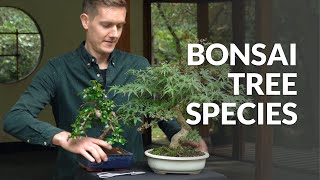Larch Bonsai Care guidelines
The Larch and the Golden larch grow best in full sun, preferably semi-shaded in summer during the hottest hours. Larix trees are very frost hardy trees, but they should be protected from excess rain in winter. The Pseudolarix prefers semi-shade during hot summer weeks and should be protected from drying winds. It is not frost hardy and should be kept in a cold frame during winter.
Larches must be watered thoroughly when the soil gets dry. The Pseudolarix needs a lot of water and should be kept moist, never let the rootball dry out. In summer the pot of the Pseudolarix can be placed in a shallow water bowl to ensure sufficient moisture on hot days. Larix and Pseudolarix both don't like very calcareous water. Continue reading about watering Bonsai trees.
Watering
Free lecture from the Beginners CourseStart feeding after the buds have opened in spring. You can use a high nitrogen product first to help the new shoots develop vigorously, later choose a balanced product. Use liquid fertilizer every week or apply solid organic fertilize every month.
The larch takes regular pruning well. If larger branches must be pruned, this should be done in winter or early spring, before the tree starts growing. Avoid cutting back mature trees to the same points again and again because this would produce ugly knobs and promote senescence. Odd and badly positioned buds should be removed before they open. The twigs are shortened to two buds where possible. Larches have sticky resin which makes cut paste obsolete, and grow strong callus tissue which closes cut wounds quite quickly. In summer the long shoots are shortened when they have grown 4–6" long (10-15cm) and the buds near the base of the shoots become visible. Larches can be wired during winter dormancy, before the fragile buds begin to swell in spring. Younger branches of the larch and golden larch are quite flexible and can be shaped easily with wire and guy wires. The twigs and branches thicken quickly during the growing season and the wire must be taken off in time before it bites into the bark too deeply. Moderate wire marks will grow over quite soon, at the latest when the bark becomes flaky. Continue reading about pruning Bonsai trees.
The larch and golden larch should be repotted every two years, old specimen every three to five years. Repotting should be done in late spring, before the buds open, or in autumn. Do not remove more than one third of the root mass. Use a pH neutral or slightly acidic standard soil mix. Continue reading about repotting Bonsai trees.
Larches can be propagated from seed or semi-hardwood cuttings. Air-layering is also possible.
Larix Bonsai and Pseudolarix can be attacked by mealy bugs, black aphids, tiny aphids which leave kinked and drying needles, caterpillars, bark beetle larvae, gall midges, saw fly and fungal diseases like grey mold rot and needle cast. Use a specific pesticide and try to improve your tree's living conditions. In unclear cases it is advisable to seek advice from a professional gardener. For more detailed information on these techniques, check out our Bonsai tree care section.

Larch Bonsai (Larix)
General information about the Larix Bonsai tree
Two common species are the European Larch (Larix decidua) and the Japanese Larch (Larix kaempferi) and there are also hybrids of both. All other Larix species are also very well suited for bonsai creation. The Golden Larch or Chinese Larch (Pseudolarix amabilis), despite much longer soft light green needles, looks quite similar to the Larix, but it is not frost hardy and needs more moisture. If you need help identifying your tree, take a look at our Bonsai tree identification guide.





